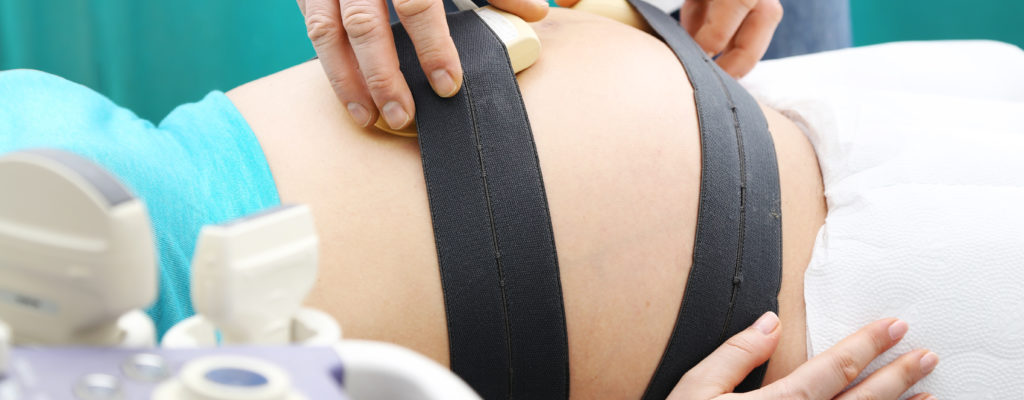
The fetal heart is regularly monitored by doctors during labor to detect dangerous problems and have timely treatment plans.
You wonder why it is necessary to measure the fetal heart during labor ? This is essential for both you and your new baby. Let aFamilyToday Health follow the following shares to understand more about this.
Monitor fetal heart
The doctor will monitor the fetus during labor. The easiest way to do this is to monitor the fetal heart rate. This helps to make sure your baby is okay.
The doctor can follow from the outside or inside. External tracking means that the tracking sensors will be outside of your body, while internal tracking is the sensors placed inside your body. Most pregnant women are monitored outside. The internal monitoring is used only when there is a special reason or when the doctor needs more accurate information.
Track outside
The easiest way to follow up is to use a stethoscope. Your doctor will place a special stethoscope or device called a Doppler probe on your abdomen to listen to your baby's heartbeat. This will be done at certain times during labor, such as every 30 minutes. If problems arise, you will be checked out more often. Some women like this method because they can move around during labor.
The most common type of follow-up is the pregnancy's electrocardiogram. This way, 2 belts containing very small tracking devices will be attached to your abdomen. Your baby's heart rate will be continuously monitored. The device will record both your baby's heart rate and your contractions. This helps the doctor check how the baby is responding. Sensors remain on your abdomen during labor. As a result, you must lie in bed most of the time.
Track inside
A small electrode is placed directly on the baby to monitor the heart rate. The sensor will be attached to your leg. Electrodes are threaded through the cervix, into the uterus and attached to the baby's scalp. A small tube can be inserted to measure the contraction. This method provides accurate data on the baby's heart rate and mother's contractions.
This method is usually done if the external monitoring method is not effective. The reason may be because you move a lot or you are obese. The doctor may also want more accurate information for other reasons. This can only be used if your cervix is dilated and the amniotic fluid has ruptured.
Advantages and disadvantages of fetal heart measurement
Some women do not want to be continuously monitored because the follow-up prevents them from moving around. However, many doctors want you to do this. If you don't want to be followed, talk to your doctor as soon as possible.
Monitoring the fetal heart rate can detect problems. If something is out of the ordinary, your doctor may decide to give birth early. In addition, follow-up can help your doctor decide if you should take medicine to speed labor or use forceps or vacuums for your baby.
Which method should be monitored?
You don't need constant monitoring if:
During pregnancy there are few risks.
You do not experience complications during labor.
You will need constant monitoring if:
During pregnancy you face many risks.
Complications occur during labor .
You have an epidural.
You must take medicine (oxytocin / Pitocin) to stimulate or speed labor.
How is the baby's heart rate normal?
Gestational heart rate ranges from 110 to 160 per minute.
Heart rate increases as the baby moves.
The heart rate increases during contractions.
The heart rate returns to normal after the baby moves or after contraction.
Have strong and frequent contractions during labor.
How is fetal heart rate abnormal?
Heart rate less than 110 beats per minute.
Heart rate over 160 beats per minute.
Heart rate is irregular or does not increase when the baby moves or during contractions.
When should doctors intervene?
Changing your heart rate doesn't mean you have a problem. Many times the condition is natural, such as the heart rate increases when the baby moves or during contractions. If your baby's heart rate rises very quickly or drops quickly, your doctor may suggest:
Change your posture.
Add more oxygen
Stop using oxytocin
Take medicine to relax the uterus. This reduces contractions.
Pour sterile liquid into the uterus if the amniotic fluid has broken.
If none of the above interventions are helpful, your doctor may consider accelerating the delivery process. To do this, the doctor will use supportive objects such as forceps or a vacuum to pull the baby out instead of waiting for contractions to push the baby out or the doctor will prescribe you to have a cesarean section.












